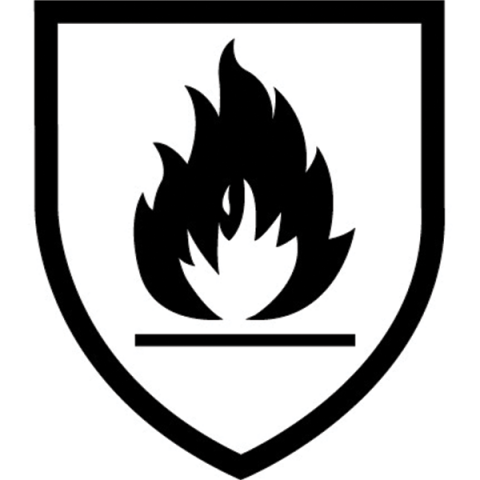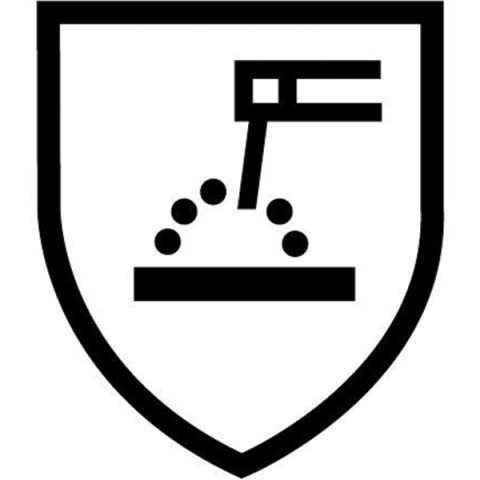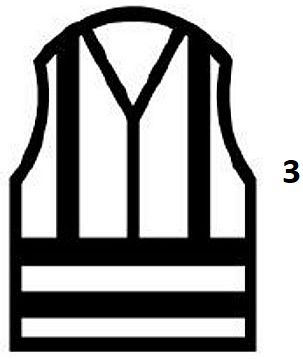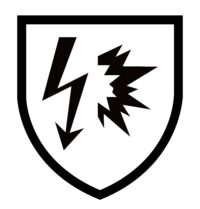Technical Information & Declarations of Conformity
See below details on relevant standards applicable to Personal Protective Equipment (PPE) and
understanding markings. Declarations of Conformity on all Yansport products are available on the Declarations of Conformity Page (Click Here).
 These garments bear the CE Mark to demonstrate compliance with the requirements of PPE regulation (EU) 2016/425
These garments bear the CE Mark to demonstrate compliance with the requirements of PPE regulation (EU) 2016/425
 EN ISO 11612:2015 Clothing to protect against heat and flame
Clothing designed to provide protection where there are requirements for limited flame spread and where the user may be exposed to convective or radiant heat or molten iron splash.
EN ISO 11612:2015 Clothing to protect against heat and flame
Clothing designed to provide protection where there are requirements for limited flame spread and where the user may be exposed to convective or radiant heat or molten iron splash.
A – Limited Flame Spread (Surface Ignition), B – Convective Heat,C – Radiant Heat, D – Molten Aluminium Splash, E – Molten Iron Splash, (No. 1 indicates the lowest level of acceptance)
 EN ISO 11611:2015 Protective clothing for use in welding and allied processes,
Type of welders clothing:
EN ISO 11611:2015 Protective clothing for use in welding and allied processes,
Type of welders clothing:
Class 1 Selection criteria relating to the process: Manual welding techniques with light formation of spatters and drops, e.g.: Gas welding; TIG welding; MIG welding (with low current); micro plasma welding; brazing; spot welding; MMA welding (with rutile-covered electrode).
Selection criteria relating to the environmental conditions:
Operation of machines, e.g.: Oxygen cutting machines, plasma cutting machines; resistance welding machines; machines for thermal spraying; bench welding.
Class 2 Manual welding techniques with heavy formation of spatters and drops, e.g.: MMA welding (with basic or cellulose-covered electrode); MAG welding (with CO2 or mixed gases); MIG welding (with high current); self-shielded flux cored arc welding; plasma cutting; gouging; oxygen cutting; thermal spraying. Operation of machines e.g.: In confined spaces; at overhead welding/cutting or in comparable constrained positions.
 EN ISO 1149-5:2018 Electrostatic properties of clothing (EN 1149-3:2004 measurement of charge decay)
Clothing designed to be electrostatically dissipative to avoid incendiary discharges
EN ISO 1149-5:2018 Electrostatic properties of clothing (EN 1149-3:2004 measurement of charge decay)
Clothing designed to be electrostatically dissipative to avoid incendiary discharges
 EN ISO 20471:2013+A1:2016 High visibility clothing. Clothing designed to provide protection in areas of low conspicuity (Class 1 indicates the lowest level of acceptance) High visibility protection for use in areas of low conspicuity for passive road users (EN ISO 20471 Class 1) where vehicle speed ≤ 30km/h.
High visibility protection for use in areas of low conspicuity for passive road users (EN ISO 20471 Class 2) where vehicle speed ≤ 60km/h.
High visibility protection for use in areas of low conspicuity for passive road users (EN ISO 20471 Class 3) where vehicle speed > 60km/h.
EN ISO 20471:2013+A1:2016 High visibility clothing. Clothing designed to provide protection in areas of low conspicuity (Class 1 indicates the lowest level of acceptance) High visibility protection for use in areas of low conspicuity for passive road users (EN ISO 20471 Class 1) where vehicle speed ≤ 30km/h.
High visibility protection for use in areas of low conspicuity for passive road users (EN ISO 20471 Class 2) where vehicle speed ≤ 60km/h.
High visibility protection for use in areas of low conspicuity for passive road users (EN ISO 20471 Class 3) where vehicle speed > 60km/h.
RIS-3279-TOM ISSUE 2:2019 Rail Industry Standard for high visibility clothing
 EN 61482-2:2020 Live working - Protective clothing against the thermal hazards of an electric arc - Part 2: Requirements Protection against the thermal hazard of an electric arc in the form of convective and radiant energy (EN 61482-1-1:2019) Arc thermal performance value (ATPV) refers to the energy level at which heat transfer through the protective equipment is enough to give 50% probability of a second- degree burn. The incident energy limit (ELIM) refers to the energy level that protective equipment can be exposed to with a 0% probability of breakopen or second-degree burn.
EN 61482-2:2020 Live working - Protective clothing against the thermal hazards of an electric arc - Part 2: Requirements Protection against the thermal hazard of an electric arc in the form of convective and radiant energy (EN 61482-1-1:2019) Arc thermal performance value (ATPV) refers to the energy level at which heat transfer through the protective equipment is enough to give 50% probability of a second- degree burn. The incident energy limit (ELIM) refers to the energy level that protective equipment can be exposed to with a 0% probability of breakopen or second-degree burn.
 EN 343:2019 Protection against the influence of rain, snowflakes, fog and ground humidity
EN 343:2019 Protection against the influence of rain, snowflakes, fog and ground humidity
Class 3 water penetration (Class 1 indicates the lowest level of acceptance)
Class 2 water vapour resistance (Class 1 indicates the lowest level of acceptance) X ready-made garment rain tower test (X indicates not tested)
 These garments bear the UKCA mark to demonstrate compliance with the requirements of PPL Regulation (EU) 2016/425 as brought in UK law and amended.
These garments bear the UKCA mark to demonstrate compliance with the requirements of PPL Regulation (EU) 2016/425 as brought in UK law and amended.

